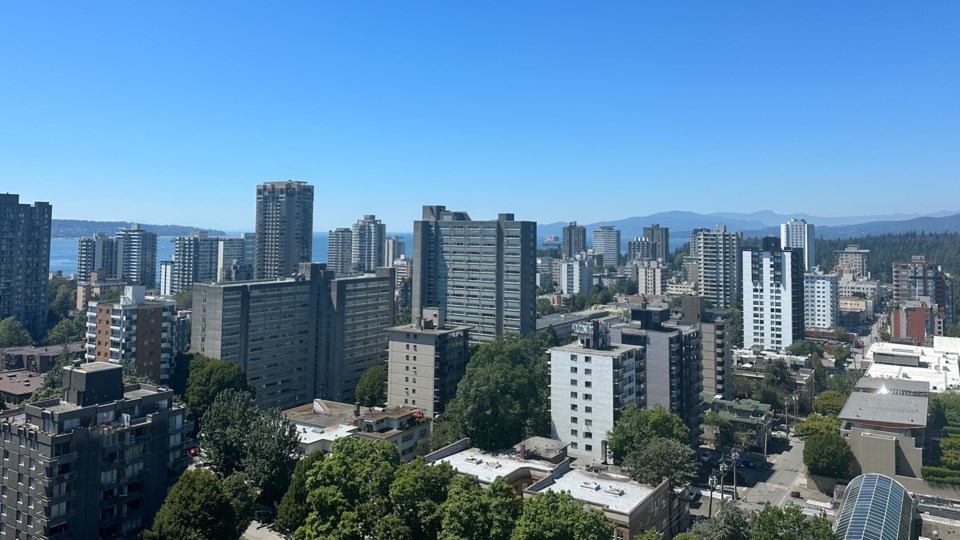Hazy conditions in Metro Vancouver are being caused by smog and also smoke coming from a wildfire burning in the United States.
On Monday, Metro Vancouver issued an air quality advisory due to elevated ground-level ozone (smog) caused by hot weather and local emissions.
The advisory remains in effect for the northeast and southeast regions — which include the Tri-Cities, Maple Ridge, Surrey and Langley — and into the Fraser Valley as far as Hope.
A wildfire burning near Lake Chelan, in Washington state, is estimated at 4,320 hectares in size and is sending smoke over the border.
Environment Canada meteorologist Armel Castellan says there could be a component of smoke making its way to the eastern side of the Lower Mainland and Fraser Valley.
"This is a super stagnant air mass," he says. "There is a partial element of smoke and just stagnant pollution, and part of that pollution is in the form of NOx, which converts to ozone and becomes 'smog.'"
The National Weather Service, a U.S. agency, has issued a warning for critical fire weather conditions.
The warning states a dry and unstable air mass with warm temperatures can contribute to active fire behaviour below the border in the United States and right up to the Whatcom and Abbotsford areas.
"Any fires that develop will likely spread quickly," states the warning.
"In western Washington, significant growth on existing fires takes place under such conditions. If a fire were to begin, air quality may diminish in the surrounding area," says the warning.
The air quality health index predicts a moderate risk for Metro Vancouver (northeast and southeast), Central Fraser Valley and Prince George on Tuesday and Tuesday night.
As for when the air quality will improve, that's a "bit of a wild card," says Castellan.
“Tonight [there will be] some fairly rigorous winds of 40, maybe 50, gusting winds down the Juan de Fuca Strait, that will start the process," he says.
Things could start to clear up Thursday morning; however, new wildfires and what happens with existing fires will play into the air quality, he says.
"New fires would obviously cause more smoke from different spots," he says. "There’s a few parts to the answer."
"The temperatures are rebuilding slightly into the weekend," he adds. "It’s not going to be heat warning criteria, but it is still going to be pretty warm."
Much of B.C. and Alberta are currently under heat warnings.
Castellan is expecting a longer hot stretch of weather.
“It’s certainly warmer than seasonal,” he says. "It's not a high risk... but it's still a moderate risk."
People who are working outside, elderly people who live in buildings without air conditioning and people with chronic health concerns should be aware of heat and prepare.
The City of Vancouver has opened cooling centres where people do not need to register. They can just show up to the locations. The City of Richmond also has cooling locations as does the City of Burnaby.
Here's a list of things people can do to stay safe during the heat and air quality advisory:
-
Take it easy and limit outdoor exercise, because the harder you breathe, the more air pollution you inhale.
-
Stay in cool, air-conditioned spaces, especially during the afternoon when ozone levels are at their highest.
-
Drink plenty of water. Staying hydrated can alleviate some respiratory symptoms.
-
Continue to manage pre-existing chronic health conditions such as asthma, COPD or other lung disease, heart disease, and/or diabetes.
-
Reduce indoor sources of air pollution such as smoking and vacuuming.
-
Masks worn to protect against COVID-19 provide little protection from gases such as ozone.



